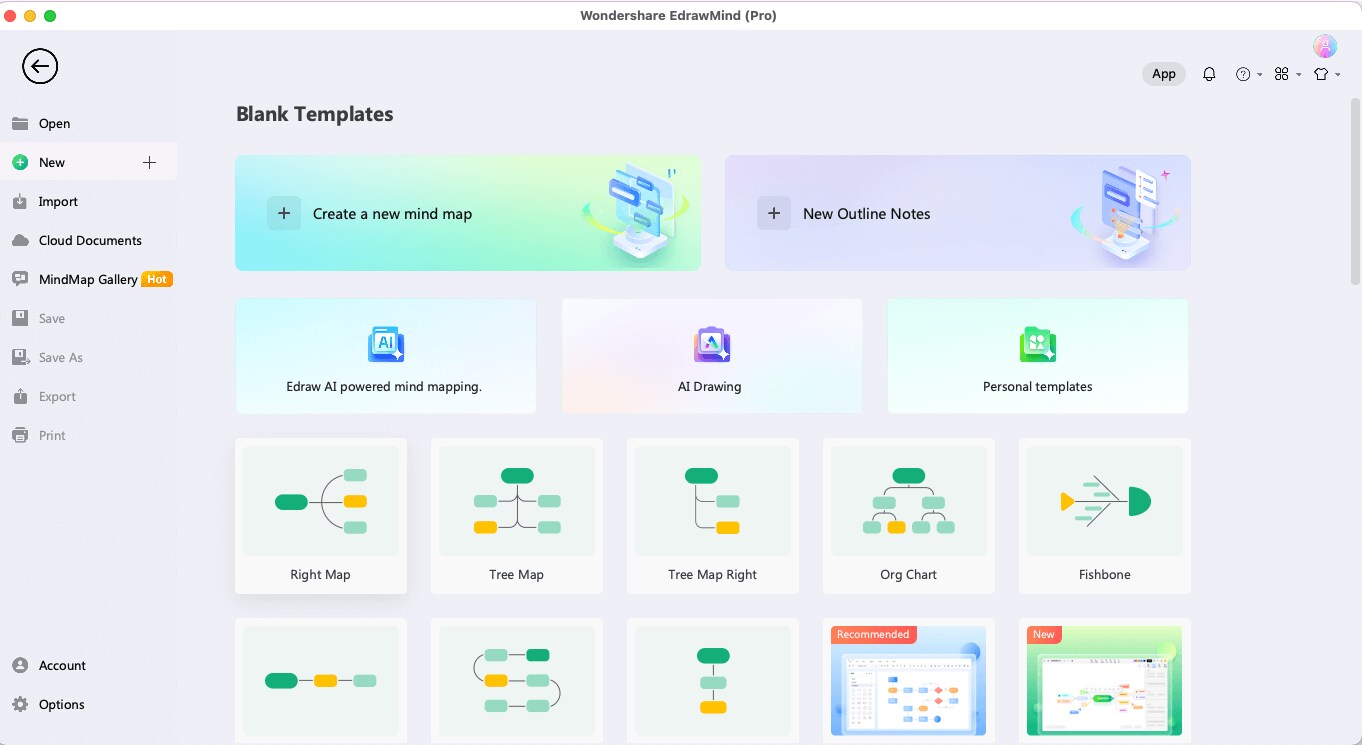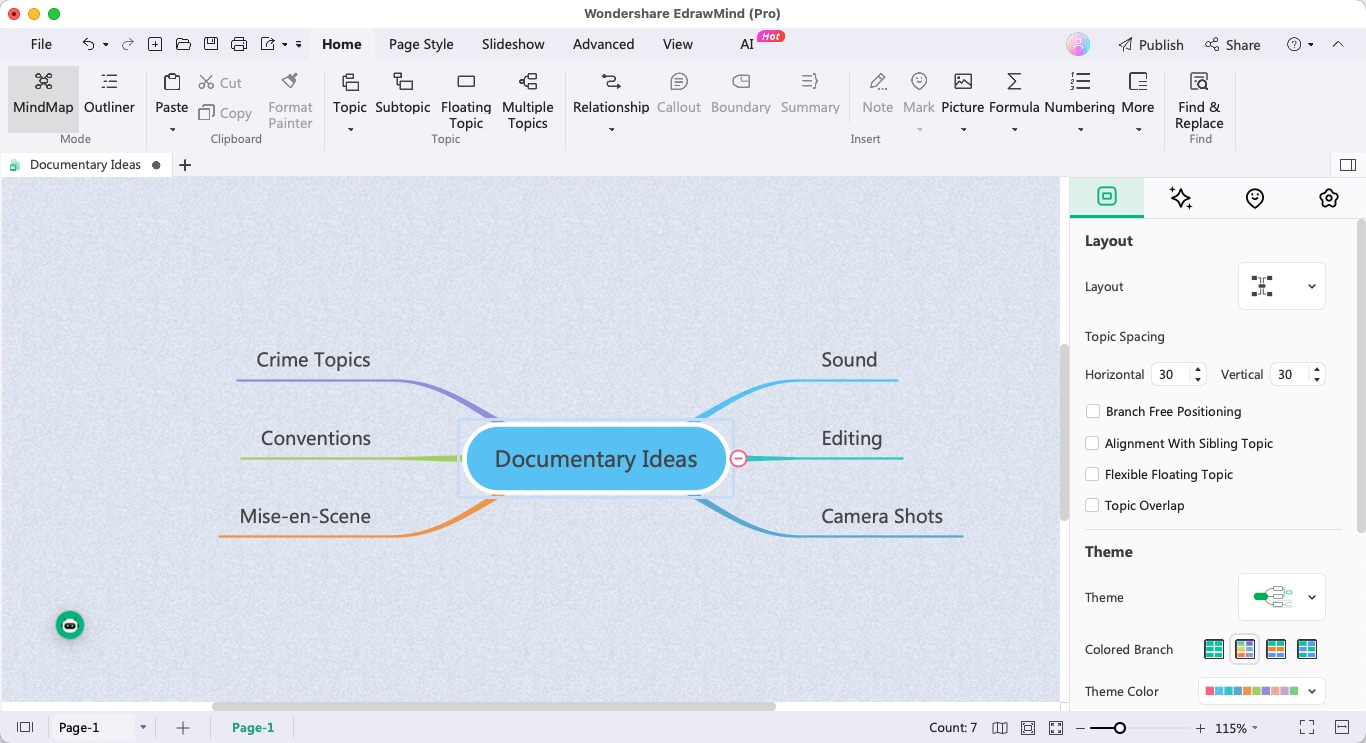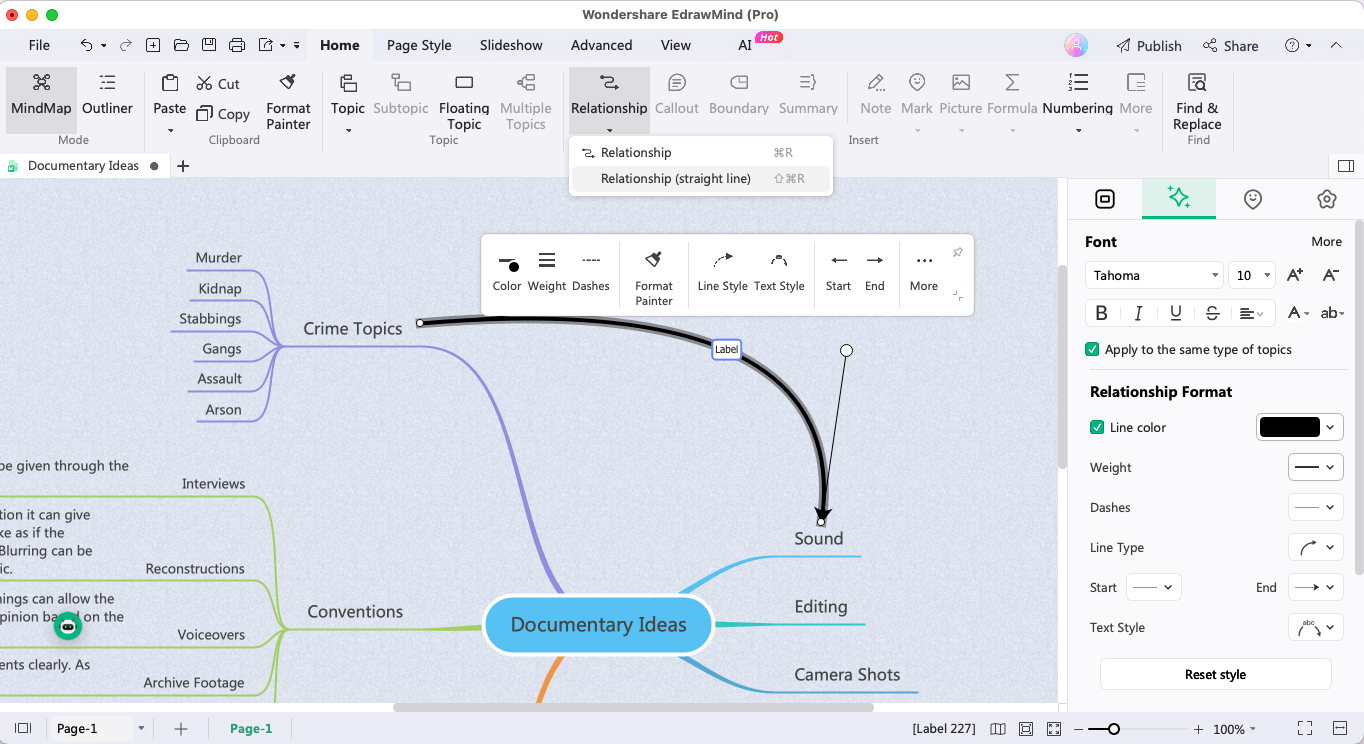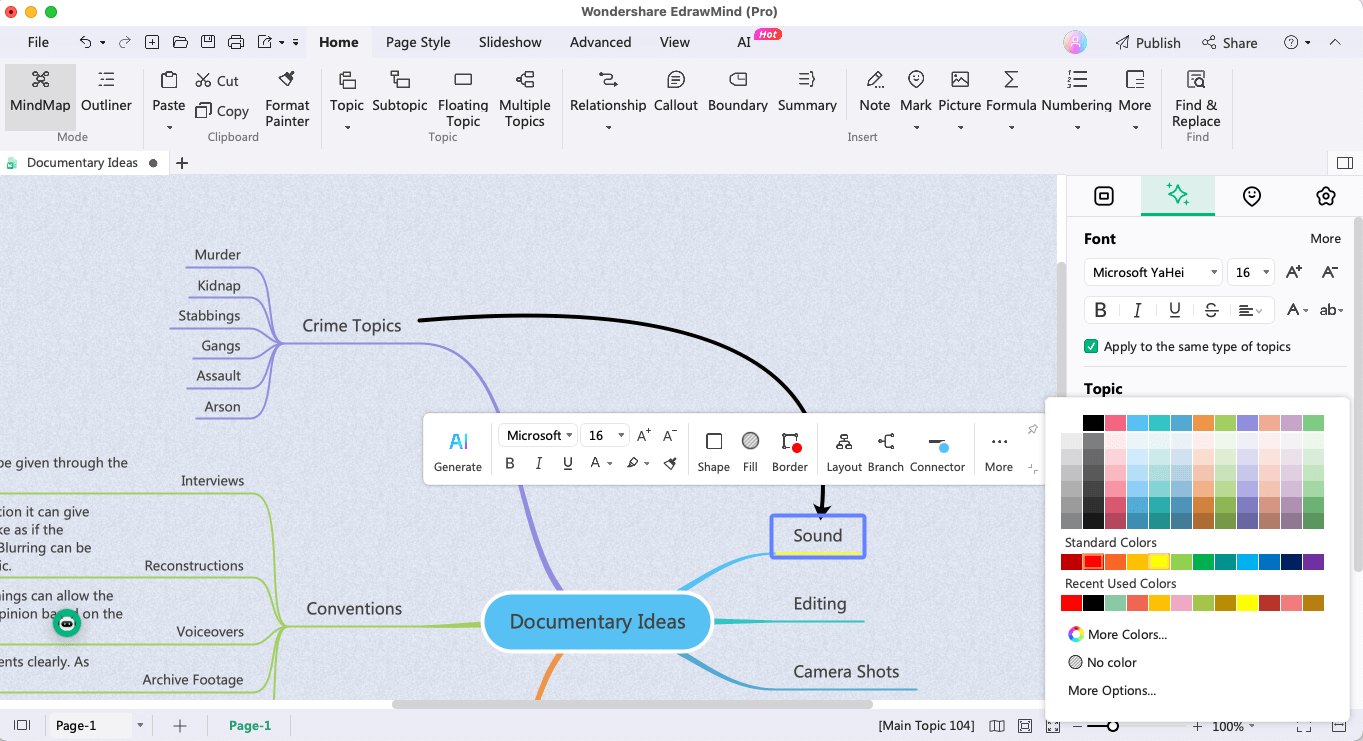In this article
Every student or project manager has tons of ideas and thoughts that they need to organize in a manner that helps them retain the information.
With idea maps, they can not only solve critical thinking problems but can also deconstruct complicated thought processes into smaller bits -- something pretty similar to Agile methodology.
In this EdrawMind article, we will talk about the concept of idea maps and will also explore how they are different from the usual mind maps. In this guide, you will learn about the types of idea maps and how EdrawMind lets you create one with free templates.

What Is an Idea Map?
As the name suggests, an idea map is a visual representation of jumbled-up thoughts, information, and concepts. Like a traditional mind map, idea maps are also versatile and powerful tools that help individuals transform their information and organize their thoughts.
That being said, an idea map is quite different than a mind map on the following grounds:
- Mind maps revolve around a central idea or theme, where we branch them out to primary and secondary categories to represent related concepts, and idea maps provide a more flexible structure.
- Mind maps are primarily created to organize and visualize information. However, idea maps' core purpose is to get clarification and depict relationships between different ideas and concepts.
- Mind maps are generally hierarchical in nature. But idea maps use different nodes and boxes to represent ideas that are connected by lines and arrows.
Unlike other visual diagrams, the core purpose of idea maps is:
- They clarify complex concepts by breaking them down into smaller parts.
- Idea maps help visualize the relationship between ideas.
- Idea maps also assist in organizing information in a well-structured manner.
- They aid in problem-solving.
- With idea maps, one can easily plan and outline complex projects and essays.
4 Types of Idea Maps
When it comes to idea mapping, there are different types that can be used as per the user and their requirements. There are a few idea maps that provide a ground for all sorts of information and concepts, making it a powerful tool to articulate different ideas.
Some of the best types of idea maps are:
- Mind Map: Mind maps are one of the most used and discussed brainstorming techniques.
- Concept Map: Concept maps are such idea maps that focus more on the relationships between sets.
- Flowcharts: Flowcharts is a diagramming process focusing on processes, decision trees, and sequences.
- Spider Diagram: Spider Diagrams are often called radial diagrams and are considered one of the widely used idea maps.
How to Make an Idea Map in EdrawMind?
EdrawMind is one tool that offers the easiest way to make your idea map.
Just by following the steps below, one can create your first idea map for free without worrying about layouts or themes.
Step 1:Download EdrawMind
The first step that you need to do is to download, install, and launch EdrawMind in your system.

Step 2:Template Gallery
Navigate to the 'MindMap Gallery' from the homepage and search for the relevant idea map template that comes closest to your requirements.

Step 3:Build from Scratch
f you know your central topic, head to the 'New' from the homepage and rename the 'Main Theme.'

Step 4:Connect Ideas
From those key concepts, start creating connections between different key topics.

Step 5:Color Code & Share
EdrawMind lets you color code different elements. You can even add different fonts and visual elements to further organize your idea map.

Some tips🤫 that will help you with your idea maps:
- Do not overcomplicate the diagrams.
- Try using different colors for different sections.
- Make sure that the connectors are easily recognized.
Idea Map Templates & Examples
The best way to understand the core concept of an idea map is by making an idea map using the free templates provided by EdrawMind.
As you can see from the following idea map template example, our core idea here is to understand different marketing mind maps, like SWOT Analysis, Tipping Points, and more.
As illustrated here, the core purpose of such structured idea maps is to approach marketing strategies and content planning in such a way that the result is achieved without much effort.
Why Should We Use an Idea Map?
Once you start making idea maps, you will realize how effective these visual representations actually are.
These diagrams help the teams and individuals simplify the content in such a manner that everyone understands the core objective and proceeds accordingly.
Some of the benefits of using an idea map are:
- Enhanced Creativity: Idea maps allow non-linear thinking (something that we discussed in the spider diagram), which inspires creative solutions.
- Simplified Information: With idea maps in place, one can break down large chunks of data into smaller parts, making it easier for everyone to understand and grasp the core idea.
- Improved Planning: Even though there is non-linear thinking involved, idea maps tend to provide a clear view of tasks and milestones.
- Problem Solving: With idea maps, you can easily create cause and effect diagrams that would help you quickly and effectively resolve all the problems that might be causing any significant issues.
Conclusion
Idea maps provide a great way to explore our ideas and find hidden connections between different sets.
With a well-structured idea map, individuals can break down complex information, align their objective, find relevant information, and illustrate their thought process creatively.
As you saw in this guide, creating an idea map with EdrawMind is exceptionally easy. Simply download the free idea map templates provided by this free tool and start customizing them as needed.
Start your idea map journey with EdrawMind today!
FAQ
-
What is the difference between brainstorming and idea mapping?
Brainstorming is a project management technique where a group sits together to generate different ideas. At the same time, idea mapping provides a structured approach to visualize ideas. -
How can idea mapping help in the writing process?
With idea mapping, students can outline their structure, organize different ideas, and find a logical flow for their content. -
What's the role of color and imagery in an idea map?
Colors and imagery tend to enhance the idea map. These visual elements provide a creative approach to understanding different nodes, elements, and interconnections.





 below.
below.  below.
below. 